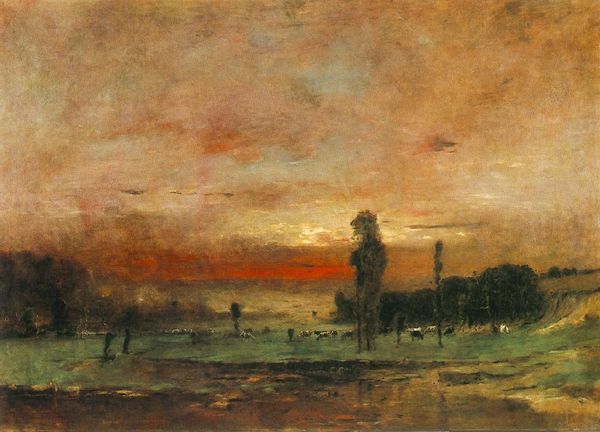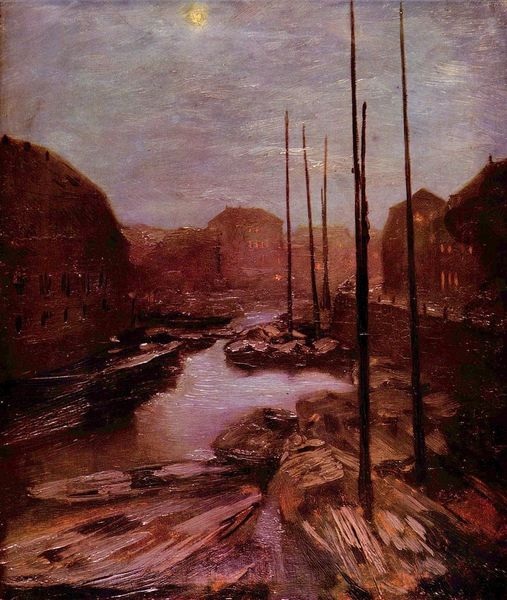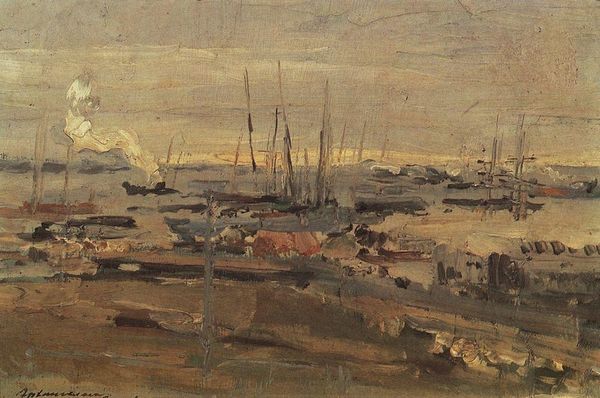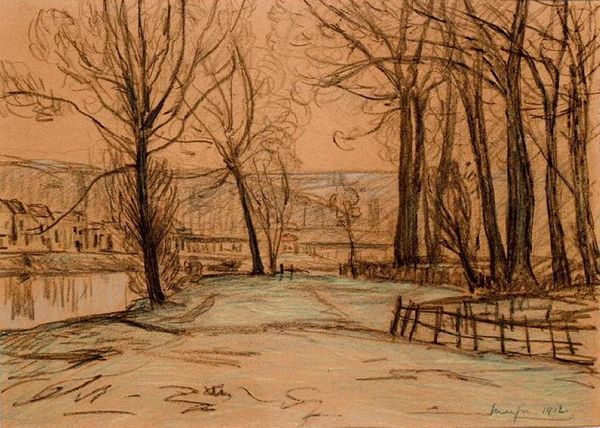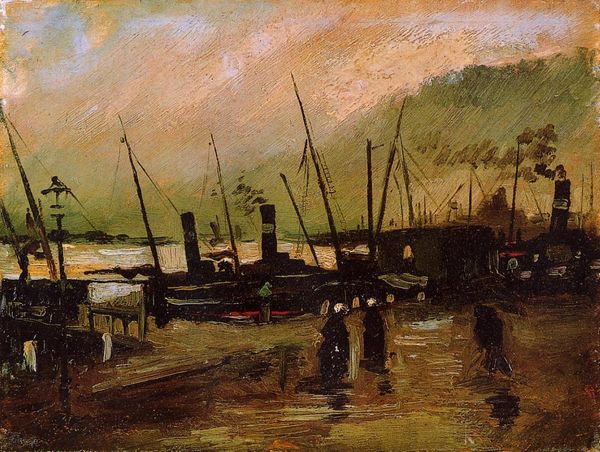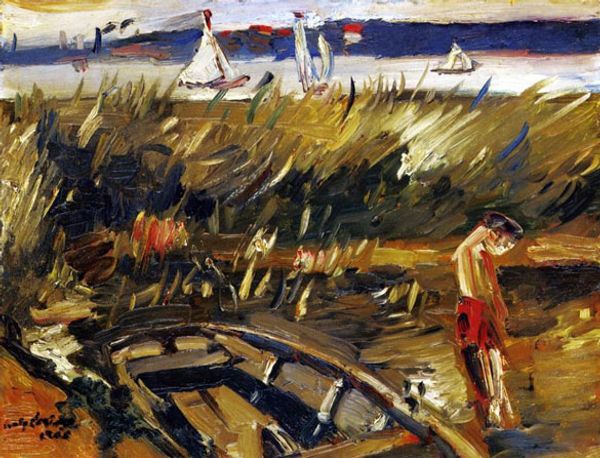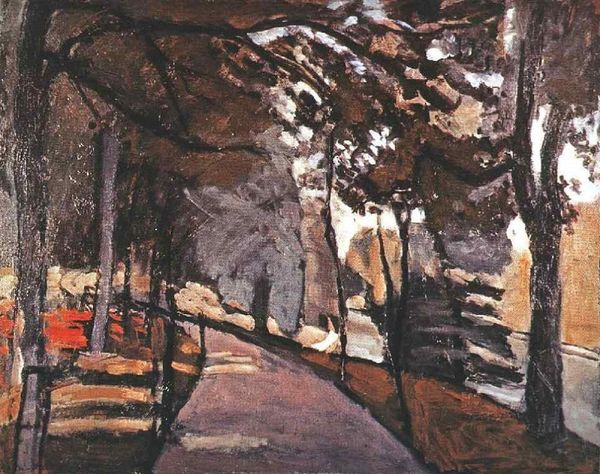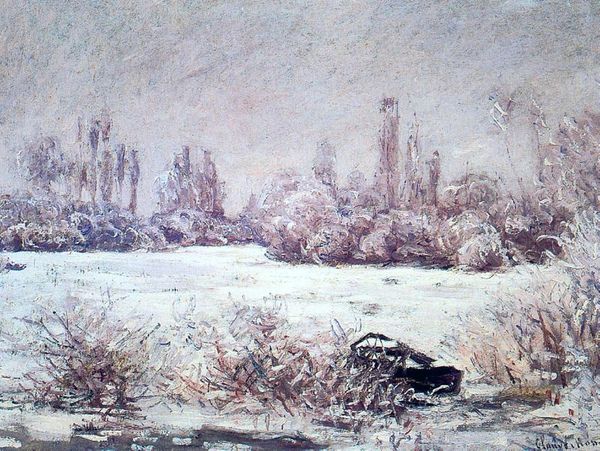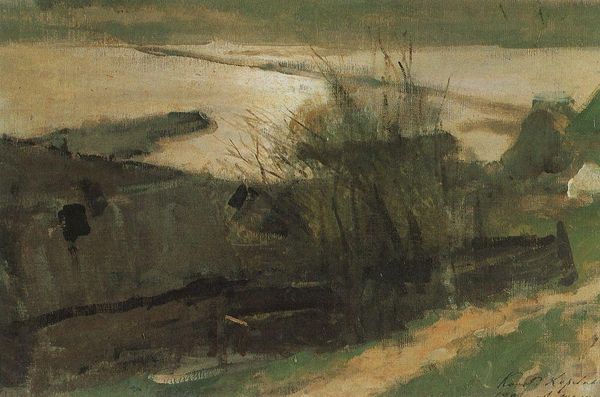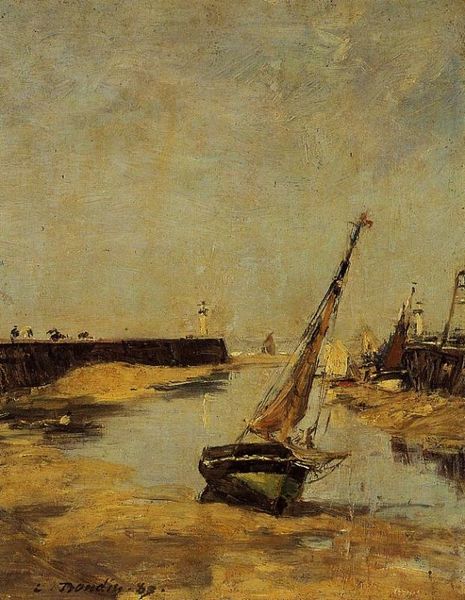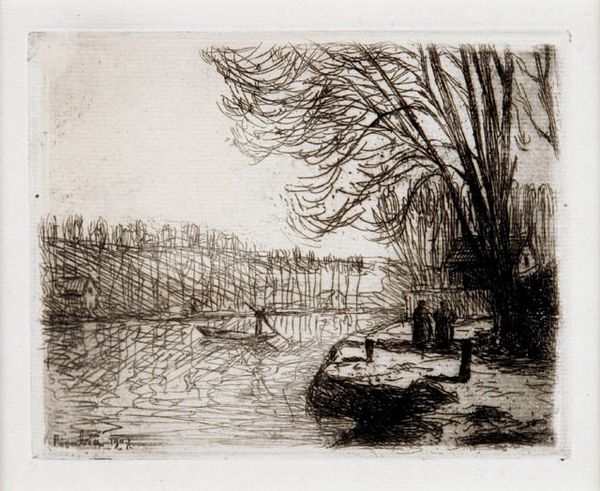
painting, plein-air, oil-paint
#
painting
#
impressionism
#
impressionist painting style
#
plein-air
#
oil-paint
#
landscape
#
impressionist landscape
#
oil painting
#
cityscape
Copyright: Public domain
Editor: Here we have Monet’s "Geldersekade or Amsterdam in Winter" from 1874. It's an oil painting, a lovely and subdued scene dominated by browns and creams. It has quite a somber tone for a cityscape. How would you interpret this work? Curator: Well, its subdued palette speaks volumes about the social and environmental conditions of the time. Amsterdam in the 1870s was a rapidly industrializing city, far from the romanticized depictions of the Dutch Golden Age. The muted colors, the almost melancholic mood, suggests a critical, though subtle, commentary on that change. The boats, are they symbols of trade and prosperity, or are they rendered almost obsolete by the harshness of the industrial winter? Editor: That’s fascinating. I hadn't considered it as a critique of industrialization. It really shifts my perception of the painting. Curator: Monet’s choice of painting en plein-air is crucial here too. By painting outdoors, he directly engages with the visible realities of Amsterdam, as they are and not how they might be imagined. How do you think the public, the rising middle class who were beginning to visit galleries and museums, might have received a painting like this? Did it reinforce their perceptions or challenge them? Editor: Maybe a bit of both? They would have been familiar with the scenes, but maybe not used to seeing them rendered with such unfiltered realism. Curator: Exactly! And it's important to remember the growing political consciousness during this period. Art became a powerful tool, sometimes subtly, to comment on socio-economic shifts. Monet here is making a clear choice to move away from idyllic imagery, pushing viewers to confront their contemporary reality. Editor: This has given me a totally new way to look at Impressionism, moving beyond just pretty pictures and seeing a deeper social context. Curator: Precisely! By considering art within its historical context, we discover it reflects the broader struggles and tensions of the time.
Comments
No comments
Be the first to comment and join the conversation on the ultimate creative platform.
